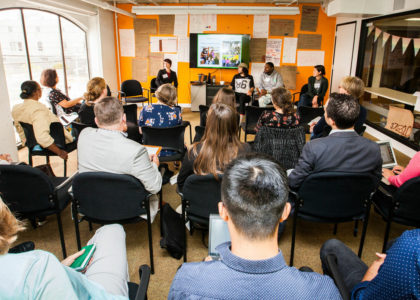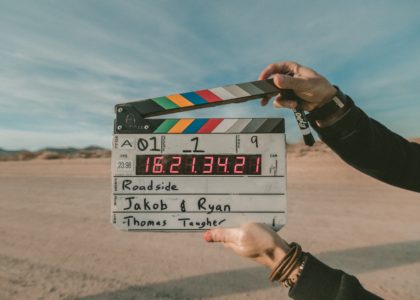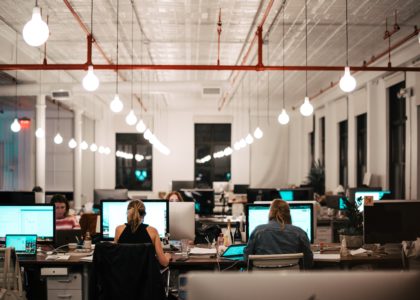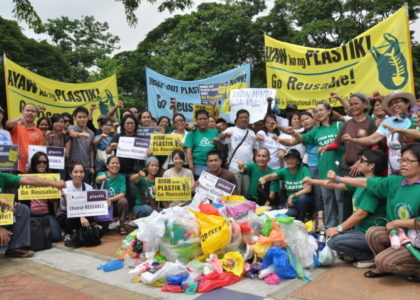Impact Investing and the Creative Economy: An Interview with Upstart Co-Lab
March 02, 2023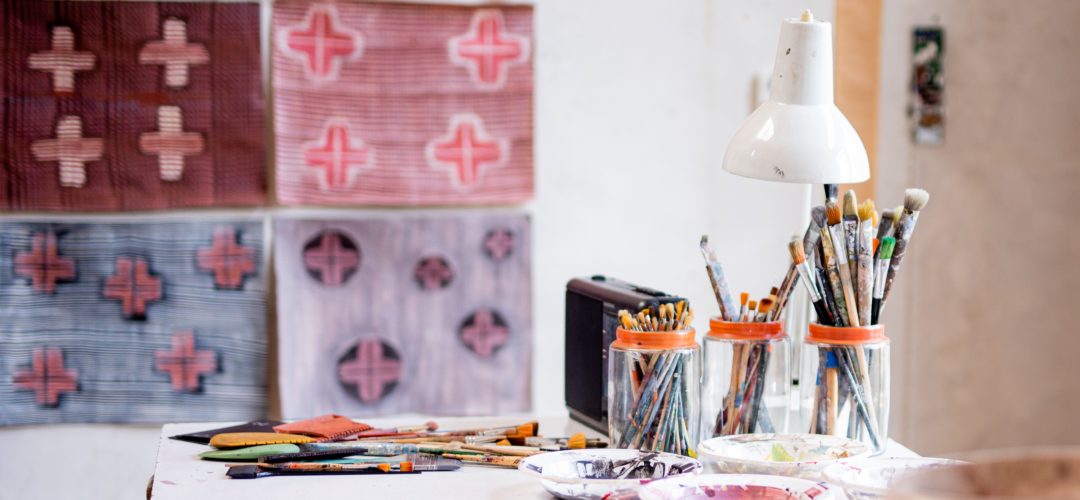

As part of Rockefeller Philanthropy Advisors’ new mission and values, we are featuring in-depth profiles of key sponsored projects to highlight their work in creating a just world. Upstart Co-Lab (“Upstart”) connects money with creative people who make a difference and a profit, bringing the $8.4 trillion of socially responsible and impact investing capital in the U.S. to the $877 billion American creative economy. Upstart Co-Lab connects impact investing to fashion, food, film & TV, video games, and other creative industries to achieve deep social and environmental impact, commercial viability, and an innovative edge.
RPA spoke with the Founding Partner of Upstart Co-Lab, Laura Callanan, about Upstart’s work. Laura discussed Upstart Co-Lab’s origins, impact investing’s role in the creative economy, and how the creative economy serves as an on-ramp to economic opportunity for BIPOC and women entrepreneurs, offers 21st century quality jobs, and anchors vibrant communities. This interview reflects edits for length and clarity.
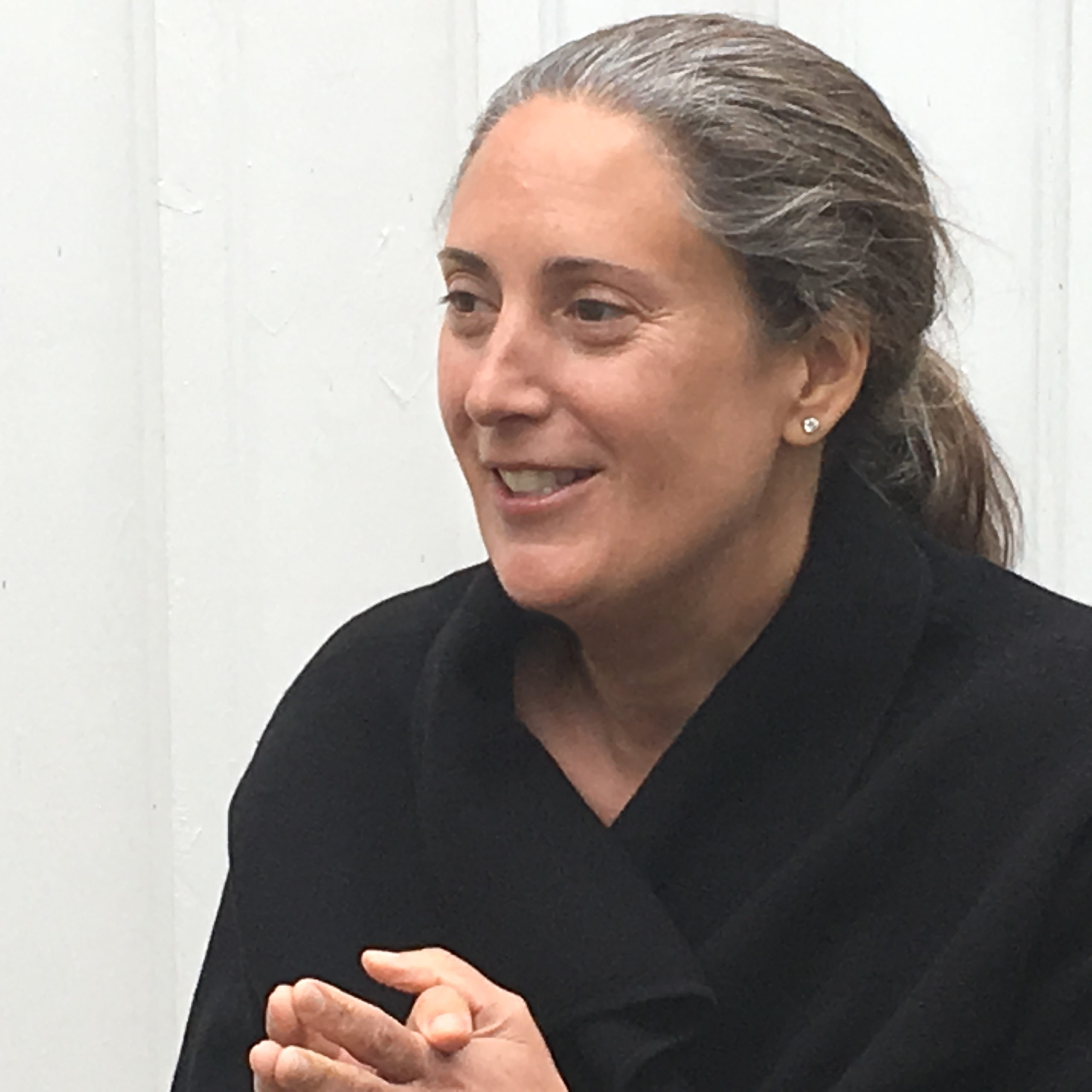
Photo credit: Helga Sigvaldadotti
What was the impetus for creating Upstart Co-Lab, and how has your unique background contributed to its strategic direction?
I launched Upstart Co-Lab in 2016. Immediately prior, I was the senior deputy chair at the National Endowment for the Arts. From that vantage point, looking at the situation for artists and creatives across the U.S., I realized that while impact investing had grown substantially in the preceding 15 years, it was overlooking 5% of the American economy: the creative economy.
The creative economy is comprised of creative industries like fashion, film and television, video games, visual art, and more. I saw that artists, designers, and creative people were increasingly starting for-profit, social-purpose businesses. These types of businesses need impact investing for growth. But artists and designers were not successfully engaging impact investors.
That’s what Upstart Co-Lab is all about. We connect capital with creative people who make a profit and make a difference. We’re working at the intersection of impact investing and the creative economy in the United States.
My time at the National Endowment for the Arts, managing the endowment and co-leading the early impact investing efforts at The Rockefeller Foundation, and as a leader in McKinsey & Company’s social innovation practice informed my work at Upstart Co-Lab. I was a grantmaker as executive director of the Prospect Hill Foundation. Early in my career I spent six years on Wall Street helping large endowed nonprofit organizations borrow in the public markets. But before all that I majored in theater in college and began my career in arts administration. What we are doing at Upstart Co-Lab pulls on everything I’ve done since I was a 16-year-old theater intern: bringing my experience in the arts, in social change and philanthropy, and in investing and impact investing together.
Upstart Co-Lab groups 145 industries that define local creative economies into five categories: ethical fashion, sustainable food, social impact media, creative places, and other creative businesses. How difficult was it to settle on those five?
We focused primarily on businesses and highlighted food, fashion, and media as three key industry segments because, in 2016, we saw this was where impact investors were already beginning to engage and we wanted to meet investors where they were. We published research deep dives on these three industries to validate the investment opportunity and the impact opportunity — and to map the funds, companies and intermediaries already demonstrating how the creative economy can help investors do well and do good.
We’ve been mining the “other creative businesses” category over time, unpacking opportunities to disrupt the visual art market, immersive experiences and more. We are about to publish a deep dive into the creator economy: online tools and platforms that allow creative people to make their content, build their audiences, monetize their ideas, and control their careers.
The fifth category, creative places, is a different asset class: real estate. These are the spaces where creative work happens and creative experiences are shared. The overall framework has served us well and we see others adopting it.
Upstart Co-Lab is primarily focused on impact investing and introducing a creative lens to this work. Have you seen the adoption of this lens result in any major changes in the industry, and what do you hope will be the ripple effect of this kind of work?
Upstart is a field builder, a catalyst, a connector. We work to raise awareness of the creative economy among impact investors — and awareness of impact investing among artists, art collectors, foundations funding the arts, and endowed cultural institutions.
It is thrilling that after seven years fund managers, wealth advisors, and leaders in the impact investing space are talking about the creative economy, publishing spotlight reports on the creative economy holdings in their portfolio, renaming and reframing a category they had called “arts and culture” – which doesn’t fit very well in an investment conversation – as creative economy.
Upstart has also spent time educating leaders of museums and other endowed cultural institutions about how they can amplify their values and mission through their endowment investment strategy. We’re excited that museums that we’ve been advising are committing to work with BIPOC and women fund managers, selecting sustainable investment funds, and investing in their local economies. We did a survey last year which revealed that cultural institutions still have a ways to go: 13% of America’s independent museums of art and design are currently engaged in values aligned, and mission related investing, compared to 47% of universities and 51% of foundations. But the journey has begun.
What role does community play in Upstart Co-Lab’s work and how do you center people and communities?
Before I launched Upstart, I spent a year as a visiting fellow at the Federal Reserve Bank of San Francisco where I edited a journal on creative place-making as a driver of comprehensive community development. We wrote on the role that creative businesses and places play to strengthen communities, spark civic engagement, improve quality of life, and create economic opportunity.
That research was very much in mind in the early days of Upstart. In the first few years, we partnered with community development leaders on two pilot funds that brought capital from artists, arts institutions, and arts foundations to support affordable housing for artists and an affordable shared workspace for creative economy businesses. These funds demonstrated that if you created the right impact investing vehicle, impact investors are hungry to put money behind creative people.
We’re also creating community by building a coalition of impact investors who are passionate about art, design, culture, heritage and creativity. We see artists, art lovers and arts organizations as a new cohort of impact investors. We know they believe in the power of the creative economy to deliver profound, people-focused impact. We know they will want to invest in the creative economy as soon as they see this is a possibility.
In April 2022, RPA released a new framework for looking at philanthropic institutions, the Operating Archetypes. Where do you see Upstart Co-Lab fitting into this framework?
Upstart’s introduction of a creativity lens to impact investing followed the example of gender lens investing. Early on, we went to the mothers of gender lens investing and asked, “What’s your recipe?” They told us it’s a three-part recipe: make the case, build the coalition, and bring investible products to market. That’s what we have done. It aligns nicely, I think, with three of the categories of your framework.
Making the case centers around the communication that Think Tanks typically contribute to the conversation. We have spent a lot of time on thought leadership and done a lot of original research. The Field Builder category of your framework relates to building the coalition that I described, bringing together a cohort of investors who believe in the power of creativity and culture. And then your category of Venture Catalyst connects to that third part of the recipe, which is to bring investible products to market. Once the research and the thought leadership have persuaded people, and they have come together with peers in the coalition, you need to give them an investment vehicle that allows them to put their capital to work.
Since launching in 2016, Upstart Co-Lab has made a huge difference for the creative economy, directly mobilizing $23 million of capital. What’s next?
We are currently launching the third chapter of Upstart. Our first chapter focused on making the case, proving that art-loving investors want to invest for impact and qualifying a pipeline of investible opportunities where that capital could do well and do good. We did research, hosted convenings, and piloted new funds to demonstrate that our thesis was valid.
The second stage of Upstart has been about building the coalition. The Upstart Member Community of 10 families and foundations learned from each other, invested together, and demonstrated what impact investing in the creative economy can be. We also advised 25 endowed cultural institutions, supporting their learning journey and helping them understand how their endowments could better align with their values and mission. Over the past 3 years, we activated 35 investors with a combined $7 billion in capital.
Now in 2023, we’re launching our third chapter: our Inclusive Creative Economy Strategy. We are making it easy for impact investors to put their money to work in the creative economy. Our Inclusive Creative Economy Strategy is the first of its kind in the United States, but there are already similar funds in Europe, Latin America, and Africa. We are raising up to $100 million of investment capital from foundations and donor advised funds. We will invest in both funds and companies that work at this intersection of impact in the creative economy. We will be driving impact focused on access to capital for BIPOC and women entrepreneurs, quality jobs for a diverse workforce in the 21st century creative economy, vibrant communities anchored around creative places and businesses, and sustainable lives and livelihoods for creative people.
Upstart is going first to de-risk and decipher the space. We want other impact investors to come into the creative economy with much more capital. Upstart is a field builder; and we want to the field to flourish.
On the Upstart Co-Lab website, there seems to be a focus on driving equity in the sector. You write: “Through the creative economy, investors can back BIPOC and women entrepreneurs; create on-ramps to economic opportunity in low-income communities; grow quality 21st-century jobs for middle skill workers; connect ethical, sustainable supply chains with educated consumers; and bring diverse, culturally-authentic stories to the big and small screen.” Have you seen this come to fruition?
Absolutely. Our 2022 Impact Report shares a dozen examples of funds and companies in the creative economy aligned with our goal of enabling access to capital for BIPOC and women entrepreneurs. When you actively look to identify these opportunities, they’re plentiful. We have 300 opportunities like the ones describe in our Impact Report in our proprietary investment pipeline.
Photo by Laura Adai on Unsplash.
Back to News
